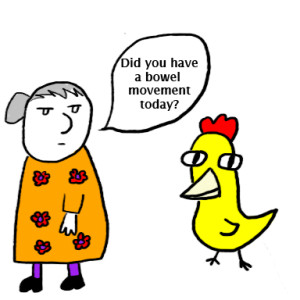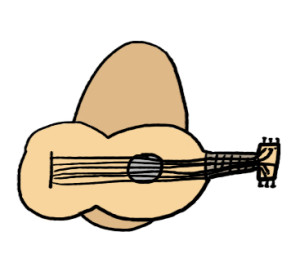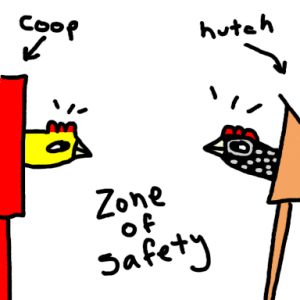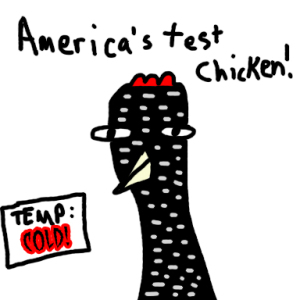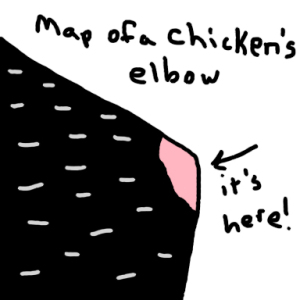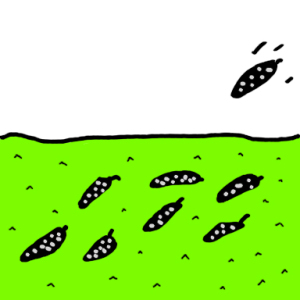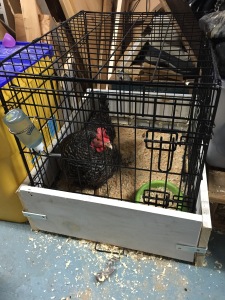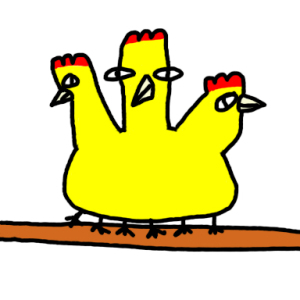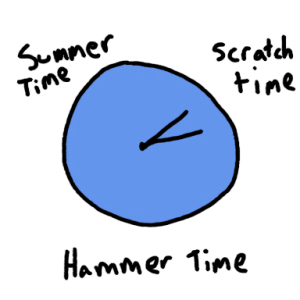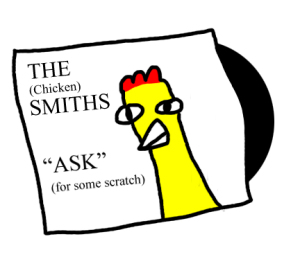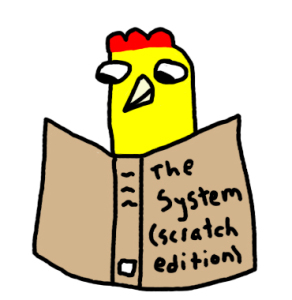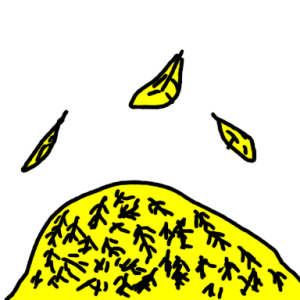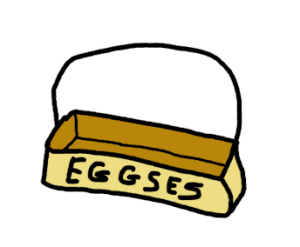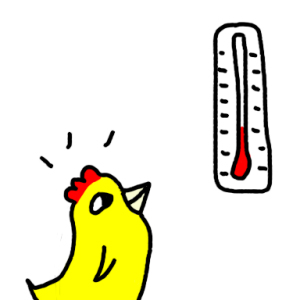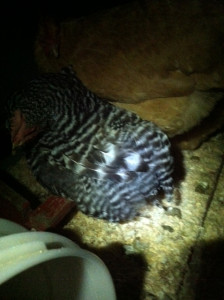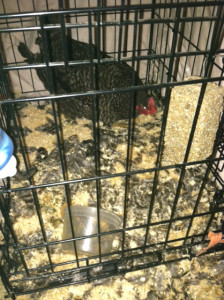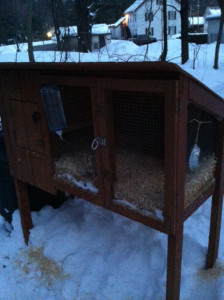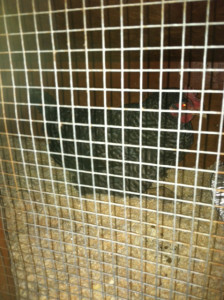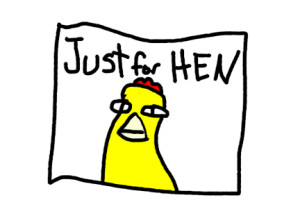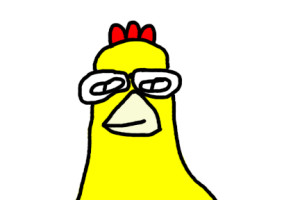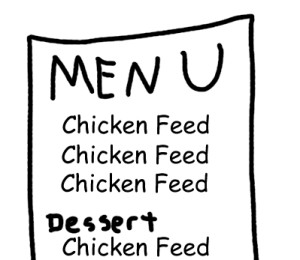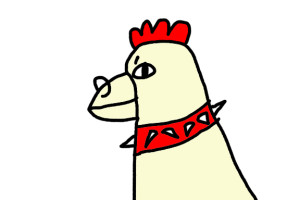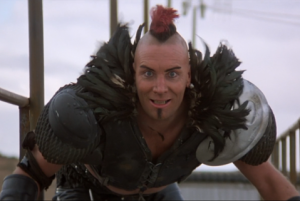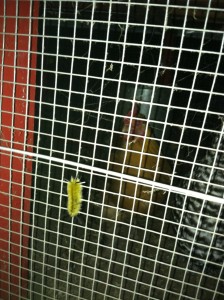Guess What? Chicken Butt!
Friday, April 3rd, 2015Every night I stick my head inside the coop door and say goodnight to the chickens before I lock them in. This is not just because I am a nurturing chicken owner. I also do it to make sure they’re all there, as Boss Chicken once spent the night outside in freezing weather because I hadn’t noticed she was missing. I can also often get a better look at them while they’re roosting than I might normally while they’re running around. Of course, when I stick my head in the door the chickens use to enter and exit the coop, I am right at butt level. This isn’t always the place you want to be. However, on more than one occasion, this view has allowed me to save the day by noticing something was wrong with a chicken. The butt can often be the window into a chicken’s health. In the past, I’ve been able to spot vent gleet, thanks to its telltale symptoms that give it the nickname of “nasty butt disease.” Your grandparents possibly frequently asked you if you had had a bowel movement. They probably would have been good with chickens, as what comes out, or does not come out of a chicken’s butt is something you need to keep an eye on.
It’s always a surprise to peek in and see something amiss, and sometimes, given the way the chickens like to sit on top of one another, I don’t always get a good look. But sometimes I do, like the other night when I stuck my head in and got an eyeful of Henny Penny’s alarmingly featherless hind end. I had been a little worried about her anyway, since she had had really long molt this winter. Long enough that it made me paranoid. Like months. She’s seemed fine otherwise, but here was some evidence that maybe things weren’t great. My first thought was that she had been getting pecked there, since my mom had been calling me about problems with her own chickens pecking butts. I figured if this was it, I should put some Bag Balm or something on the raw area, so I’d need to grab her. The small door my head was in was too small for me to get at her, so I had to go around back where she would be farther away. I had no good options, but the need to protect her kicked in, and I managed to get her with one quick nab. She made an unholy noise, but I flipped her on her back and she calmed down. I took her inside, and realized the Bag Balm was deep inside the house. A house full of cats. Then I remembered that I had some Blu-Kote, which I had just recommended to my mom, in a catless part of the house. I brought her there, swabbed her with some dark blue antiseptic goodness, and brought her back to the coop. Then I remembered why you’re supposed to wear gloves with Blu-Kote. Luckily, my hands weren’t too Smurfy, and I put them to work on the computer, checking on any other possible causes for this feather loss.
Feather loss can also be caused by an egg being stuck inside the chicken. We have had days where we get 5 eggs in the coop, but there are 6 chickens in there. That doesn’t mean anything really, but this created enough doubt in my mind that I knew I was walking into another “I stuck my finger in a chicken’s butt” story. I got my rubber gloves, grabbed poor Henny Penny again, and once again stuck my finger in a chicken’s butt. I didn’t feel an egg, which is good. I wasn’t sure what I was supposed to feel, but there certainly wasn’t an egg right at the threshold. Still, I figured I should keep an eye on her, so I brought her inside and put her in the dog crate Boss Chicken spends the winter in. She walked normally, so that was another egg bound symptom dismissed. I put her to bed, and went to bed myself.
The next morning, as I was getting the chickens’ breakfast ready, I was debating bringing Henny Penny back out, or if I should keep her quarantined, just in case. Then I opened the door and got hit in the face with the smell of the Chicken Butt Apocalypse. I went in, and not only had she pooped, but it was enormous. I knew then that no egg was blocking anything, and I brought her back outside. Maybe she’s getting pecked, maybe it’s something else. I’ll continue to monitor the situation. But that smell left no doubt in my mind that there were no clogs in this bird, and she was o.k. to rejoin the flock. At least one problem is ruled out, and time will tell what the cause of this actually ends up being. In the meantime, I’ll add another notch to whatever it is I use to track my exploratory chicken probings. That seems like the best euphemism for this.
(CREDITS: Theme music: Chicken In The Barnyard by Fireproof Babies, Music bed: Fluffy Ruffles by All Star Trio)
